There’s a certain set of personal-injury lawyers in Chicago who, over the course of decades, have become standard-bearers for the profession. Instead of talking to them, Chicago Lawyer spoke with a few veteran attorneys who stand a serious shot of making that short list in the future to learn how the field of personal injury is evolving. It’s not an exclusive or definitive list, and the interviews have been edited for length.
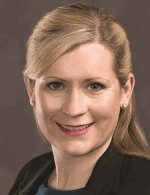
Margaret Battersby Black
Partner, Levin & Perconti
Age: 35
Years at firm: 10
Law school: IIT Chicago-Kent College of Law
Practice area: Nursing home and medical malpractice
Which longtime personal-injury lawyers do you admire and why?
My two partners who founded the firm, and my dad (Michael Battersby of Michigan), who is a personal-injury lawyer as well. I got an early taste for liking the area of personal-injury law because I would see that my dad was helping people and making a difference in their lives … and John (Perconti) and Steven (Levin) are two of the best lawyers I know in terms of their ability to construct the theory of a case and execute it, cross-examination skills and preparedness. Before I started here, the only woman partner was longtime lawyer Susan Novosad. She had three kids and still managed to carry a full practice, so … she’s been able to mentor me on how to keep your practice.
What value do you find in your practice in addition to the monetary reward?
Definitely making a difference in people’s lives and helping individuals who have been wronged by either big corporations or people who are putting profits over the safety of others, particularly in the birth-injury or the nursing home cases. Although it may not be a big corporation that wronged them, they are the most vulnerable people in our society and extra care should be taken to make sure that they are safe. You can’t ever completely right the wrong, but you can make their lives better.
Within the practice of P.I. law, what trends and changes have you seen?
I think cases are being moved quickly and more efficiently. I think there’s been some changes at the circuit court level where more cases are getting tried, cases are getting trial dates earlier, and that’s obviously, from my perspective as a plaintiff’s lawyer, good, because my clients are going to get their day in court earlier.

Timothy Cavanagh
Founder, Cavanagh Law Group
Age: 53
Years at firm: 19 years
Law school: IIT Chicago-Kent College of Law
Practice area: Catastrophic injury, medical malpractice and wrongful death
What value do you find in your practice in addition to the monetary reward?
Earlier in my career, I spent a year or so with a firm representing corporations and banks. I did not enjoy it. I didn’t like representing corporations — faceless, nameless corporations. I like representing individuals when it matters most to them, when the stakes are the highest. This business is very difficult. If it’s just a job, it makes it even harder. It’s got to be a calling.
What challenges do you face that previous generations of personal-injury lawyers did not?
When it comes to tort “reform,” I don’t think it’s any different from what some of these lawyers had to deal with five, 10, 15 years ago. Big business and the Chamber of Commerce have spent decades and hundreds of millions of dollars polluting people’s minds against injury victims, against the right to a jury trial, which is sacrosanct. It’s part of the Constitution. I am hopeful that some of these politicians in a certain political party who want to take away the 7th Amendment right to a jury trial will respect the U.S. Constitution. But I suspect it’s only going to get worse.
Within the practice of P.I. law, what trends and changes have you seen?
The internet has been a wonderful change in the practice, where you can get immediate information on a defendant’s expert or when you’re looking for an expert or you’re looking for similar incidents in a product-liability case. The ability to collect evidence or to talk to other lawyers around the country who might have had a case similar to yours has been a wonderful tool to make the world transparent. But the internet has become a way for lawyers with no experience to advertise their services, and you really need experience in this business.

Brad Cosgrove
Partner, Clifford Law Offices
Age: 36
Years at firm: 3
Law school: The John Marshall Law School
Practice area: Medical malpractice, trucking, drowning
A lot of the cases you handle obviously involve some kind of tragedy. How do you handle that aspect of the job?
I know long after our case is over, our clients are going to have to live with the horrific injuries for the rest of their lives. But the thing that always resonates in my mind: While a lawsuit is a temporary piece of time that has a definitive start and a definitive end, this is a loss that — every one of my cases is a lifelong affliction for the people aggrieved by the conduct of someone else. I look at each one of these as a human tragedy. The starting point for me is I understand, if I’m being retained to be the lawyer for a family, it’s a human tragedy, it’s the highest priority and of the utmost serious nature. It’s something that I wake up with in the morning and I go to bed with at night.
Which longtime personal-injury lawyers do you admire and why?
There (are) a bunch of fantastic lawyers that are mentors that I work with on a daily basis and that have been huge influences in my career and in my life. I would say the three most influential in my life have been Bob Clifford, Keith Hebeisen and John Ambrose. When I was 26 years old, I got a million-dollar verdict with John Cushing, who is John Ambrose’s partner, in a trucking case. I’d been a lawyer for five months at that point. I’ve been told I was the youngest lawyer in history to get a million-dollar verdict. A year later, in a medical-malpractice case, I got another million-dollar verdict. I was first chair, and to the best of my knowledge, I was the youngest to have two million-dollar verdicts. So I was lucky that when I got out of law school, my mentors were of the opinion that you have to try cases.
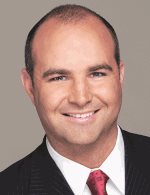
Bill Gibbs
Partner, Corboy & Demetrio
Age: 41
Law School: IIT Chicago-Kent College of Law
Years at firm: 14
Practice area: Railroad negligence, automobile collisions, medical negligence
Within the practice of personal-injury law, what trends and changes have you seen?
I think — probably the statistics would bear out what I feel — there aren’t as many trials anymore and cases are resolving through the mediation process more often. It’s a trend that, candidly, as a trial lawyer, is bittersweet. Trial lawyers want to try cases, and trial lawyers do not want to mediate cases, but they want full, fair and just compensation to be provided for their clients. When that is accomplished through the mediation process, it’s impossible to deny it.
What challenges do you face that previous generations of P.I. lawyers did not?
That’s a hard one to answer. I think technology has certainly changed the practice of law. The ability to share and transfer information electronically has certainly made the prevalence of multi-district litigation increase. And the usage of e-mail and other electronic means of conducting discovery and sharing information and communicating with clients, opponents and co-counsel have made us all always available. I think that, at this firm, that was always true — morning, noon or night, there was someone here and they could always be found. But I think across the board, lawyers are expected now to respond quickly to the needs of their clients. I think that’s a bit different than it used to be.
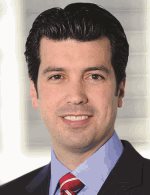
Brian Monico
Partner, Burke Wise Morrissey Kaveny
Age: 39
Years at firm: 5
Law school: Loyola University Chicago School of Law
Practice area: Wrongful death, professional malpractice
What value do you find in your practice in addition to the monetary reward?
I love the relationships you create. Several of my clients who’ve had catastrophic injuries, you help them at a time when they are at their most desperate and have no idea what happened or what went wrong. It’s truly rewarding when you can help someone provide for their family or provide for a sick loved one for an extended period of time. We’re not bringing anyone back and we’re not performing miracles, but if we can provide one level of comfort for them, it’s a great feeling. It really is a reward.
Which longtime personal-injury lawyers do you admire and why?
I’ve had the great fortune to be mentored by many of the giants of our industry. The late R. Eugene Pincham was one of those mentors. He was someone who knew all the right things to say, who was aggressive and tough but collegial. Walking down the street with him was nearly impossible because everybody wanted to talk to him. He was an awesome man.
What challenges do you face that previous generations of P.I. lawyers did not?
I have the sense that years ago it was a smaller field. And I think the practice had a little bit higher sense of collegiality or civility to it. Not that it’s uncivil now, but I think motions to compel and motions for sanctions are a little more frequent now than they were in the past. Another challenge is the internet and social media. Back in the day, people had to do some serious snooping or videotaping through stealth means if they wanted information about your client. Now, people have blogs, people have Facebook, Twitter, Snapchat — all these forms of expression where you can get a lot of information about clients.
.jpg.aspx?width=150&height=195)
Adria East Mossing
Founding partner, Mossing & Navarre
Age: 55
Years at firm: 5
Law school: DePaul University College of Law
Practice area: Medical malpractice, auto and trucking, nursing home cases
Which longtime personal-injury lawyers do you admire and why?
I tried a case when I was on the defense side against Howard Shaffner. He went to every court appearance in the case and every deposition. I was really impressed with that. What it taught me was that if you put in the hard work, if you’re there seeing how all the witnesses do, when it comes to the trial of the case, you have such an advantage.
What challenges do you face that previous generations of P.I. lawyers did not?
I don’t think there are that many women that are trial lawyers, and certainly not many women that are medical-malpractice lawyers. Probably one of the biggest reasons is it’s incredibly time-consuming. It’s very emotionally challenging too, and it’s a lot of pressure. Just like the men, I think you can be equally focused on working hard and knowing the areas of the law. We also bring a different perspective to the law, particularly to personal-injury law, that maybe the men don’t see. For example, I know I bonded a lot with my clients over the fact that I am a mother. I think there’s such an advantage being a woman trial lawyer. That’s why I keep hoping to encourage younger women to go into that practice.
What value do you find in your practice in addition to the monetary reward?
My very first case, we were at closing arguments when the case settled. My client said to me, “This changed my life and it changed my daughter’s life.” Her husband was 38 when he died of a misdiagnosis of cancer. If there is a bright spot out of such horrible tragedy, it’s that you really impacted this person’s life. I don’t know if there’s many other areas of law that you can say there’s that much hands-on, tangible human contact and you can really see the changes that you make in someone’s life.
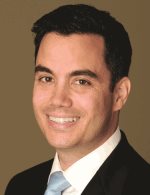
Rick Murphy
Named partner, Costello McMahon Burke & Murphy
Age: 41
Years at firm: 11
Law school: IIT Chicago-Kent College of Law
Practice area: Catastrophic injury, wrongful death
What do you enjoy about personal-injury law that differs from your experience as a prosecutor?
I do get to know my clients pretty well, which is good. You can understand where they’re coming from and it gives you a little extra fight, too. These are real injuries, these are real pains, this is real struggle, this is real grief. This is real. It gives you better insight.
What value do you find in your practice in addition to the monetary reward?
To help people. We’re certainly put on this earth to help others. I strongly believe that, I teach my kids that. When someone comes to us or comes to me, usually their lives have been turned upside down, they’re helpless, they’ve lost the ability to earn a living or they’ve lost a loved one that might have been the breadwinner. Looking at them at the end of the case, and being able say, you know what, you don’t have to worry anymore. We were able to help you. To take away that worry and anxiousness and fear for the catastrophically injured and make things a little bit easier... It’s helping people. That’s why we’re here. That’s why we’re on this earth.
What made you move in to PI law?
It goes back to helping people. That’s why I was a prosecutor, I wanted to get the bad guys and get justice for crime victims, and it’s kind of carryover from that. It’s the same thing. We’re not dealing with crimes, we’re dealing with negligence or mistakes, but they’re still victims and we try to help them the best we can.

John Power
Founding partner, Cogan & Power
Age: 54
Years at firm: 4
Law school: Loyola University Chicago School of Law
Practice area: Medical malpractice, trucking and railroad
What challenges do you face that previous generations of personal-injury lawyers did not?
I think the personal-injury practice of law has evolved because the non-malpractice companies are taking a stricter approach to cases. They’re challenging every aspect of medical care. They’re fighting every front of the case, even in obvious liability cases, and it’s because the juries are being tougher, so I think the environment for plaintiffs is more difficult, and I think it’s harder to take smaller cases because every case will be fought tooth and nail. It’s making it more difficult for plaintiffs with smaller cases to gain good representation and get good results because litigation costs have gone up. On the medical-malpractice side, with the statistics of jury verdicts being 80 percent-plus for the defendants, I feel the insurance companies feel emboldened to try a lot of cases that should be settled.
Within the practice of PI law, what trends and changes have you seen?
I see auto carriers trying more and more cases. They’re contesting more of the medical treatment because the juries are becoming much stricter. The trend is making it a riskier proposition to try smaller cases because juries are not compensating people with small cases. I also see more aggressive defenses in the proximate-cause portion of cases, where they’re staffing it with more experts trying to defend on every front. More experts increase the costs of litigation and generate less of a willingness to resolve cases.
How do expect this to change over time?
I think that our environment is always cyclical. At some point, I believe the insurance companies will realize that they’re pushing too many cases to trial that have high risk. And I think we’re starting to see the juries compensate more fairly for significant cases when you go to trial, but I don’t think the pendulum has swung back to neutral. I still think it’s on the defense side, but it seems like it does cycle every five-to-10 years.
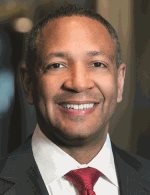
Larry Rogers Jr.
Partner, Power Rogers & Smith
Age: 46
Years at firm: 22
Law school: IIT Chicago-Kent College of Law
Practice area: Wrongful injury and death, medical negligence, trucking
What challenges do you face that previous generations of personal-injury lawyers did not?
I think the presence of advertising within our field has presented new challenges, but we’ve taken a path of resting upon our results and our reputation to secure business. There’s more competition out there, and the presence of advertisement presents some unique challenges. But if you rest on the quality of the work you do, the results you obtained, that’s the very best way to compete.
What value do you find in your practice in addition to the monetary reward?
The value is being able to help everyday people with significant challenges that they’ve faced after being victimized via trucking, medical negligence, police brutality. We’re encountering people who need help and need guidance, and it’s very rewarding to help people who are in need and facing those types of challenges.
Within the practice of PI law, what trends and changes have you seen?
I think there has been a growing attack on the right to trial by jury, and I think it’s been a much more coordinated attack than has possibly occurred in the past, which threatens the ability of everyday people to really seek and obtain justice that they are guaranteed under the Constitution. I think, unfortunately, not everybody has become aware of it because they don’t become aware until they become the victim. The trend I see is a push toward limiting and reducing and restricting the rights of everyday citizens by limiting their ability to go before a jury of their peers and their disputes and their issues decided. I’m sure they’ll keep fighting, and we’ll keep fighting for the victims as well.
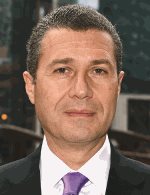
Antonio Romanucci
Principal and partner, Romanucci & Blandin
Age: 55
Years at firm: 19
Law school: The John Marshall Law School
Practice area: police misconduct, medical malpractice and workplace injuries
What challenges do you face that previous generations of personal-injury lawyers did not?
That’s an easy one — the proliferation of mass advertising. Let’s say 10, 15 years ago, not even a full generation’s worth of lawyers, I believe, you didn’t have the proliferation of advertisers who are mining for cases where I believe a lot of them should not be. I think some of the challenges that we have in this generation of lawyers is being as smart as the traditional marketers who are just mining for cases without really being able to have the infrastructure to serve clients that require the kind of justice that they need. We need to brand ourselves better so that when someone is thinking about a personal-injury lawyer, they know who the right one is.
Within the practice of PI law, what trends and changes have you seen?
Especially in the area I practice in most, there’s been a huge change in how the practice has become. There is a huge spotlight on the city, and an even bigger spotlight on the city of Chicago Police Department. I’ve talked to people in the city of Chicago Police Department, and they say they are an unfair target right now. I want to debunk that and show them that whatever target they feel that they’ve become, they brought that on themselves by their lack of transparency culture — and their unwillingness to change that culture until there was video graphic proof that people are being unjustly and unnecessarily killed in the city by police who are poorly trained and don’t know how to use deadly force appropriately.
How do expect this to change over time?
It’s hard to predict. I’m certainly seeing trends where it’s going in a better direction than where we’ve been for the last five years. I think the trend is that they are working toward fixing the problem, but this problem is so deep that it’s going to take a while before we see any meaningful change. You don’t fix decades of corruption and misconduct and poorly defined culture overnight. It’s going to take time to do that.
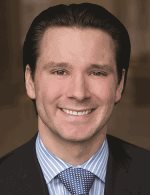
Patrick Salvi II
Partmer, Salvi Schostok & Pritchard
Age: 34
Years at firm: 9
Law school: Notre Dame Law School
Practice area: Auto, medical malpractice, product liability
Which longtime personal-injury lawyers do you admire and why?
Without question, the greatest influence has been my dad (Patrick Salvi, managing equity partner at Salvi Schostok & Pritchard). The way I like to describe how I feel about my dad and level of esteem I hold him in — a lot of questions I have, whether it’s strategy, or what to do about a particular question, I think, “Dad will know what to do.” I’ll go down to his office, and he probably has encountered it five or 10 or more times. Mike Schostok had an influence on me. What Mike really taught me was, if you’re going to convey your message to a jury, it starts and ends with your credibility. And David Pritchard. There were specific things about trial practice that I learned from him, and just his very calm, very even-keel demeanor.
Within the practice of PI law, what trends and changes have you seen?
One of the trends that I think is unfortunate is that trials are becoming more complex, more expensive, to the point where cases are not being tried at the rate they need to be tried. (Insurance companies) have a lot of claims, tons of claims, to the point where no individual or client of ours is a human being — they’re just a number. And that’s fine, and even though I fight with insurance companies, it’s necessary so they can be compensated. But at the same time, I do think insurance companies have an ethical and fiduciary responsibility here, and as trials go down, claims are paid out in much lesser amounts. They’re just crunching numbers. That’s a trend that we’ve been fighting for decades. If you move it over to the medical malpractice side, and you look at filings, they’re way down. It’s becoming so time-consuming and expensive to try malpractice cases. They’re a very low percentage of wins.
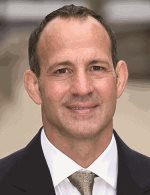
Tim Whiting
Founding and managing partner, Whiting Law Group
Age: 48
Years at firm: 15
Law school: University of Wisconsin Law School
Practice area: Trucking, serious injury
What value do you find in your practice in addition to the monetary reward?
I get to really walk in the shoes of my clients and empathize with their struggles when their lives are turned upside down through no fault of their own, and make an impact in their lives while handling their case. I also get out an absolute joy of helping so many different organizations and people that rely on our support now monthly and yearly, and that are changing lives.
Within the practice of personal-injury law, what trends and changes have you seen?
I think there’s two things that have changed in the Chicago and national personal-injury scene: lawyer collaboration on cases and hyper-specialization. I see a lot more lawyers, including myself, co-counseling with other lawyers that maybe have more specialty in this particular case. Since 2010, I have more or less specialized on trucking accidents. It’s focused my marketing efforts, it’s allowed me to be brought in by other lawyers as co-counsel, and it’s allowed me to be really, really good at something I really like. These trucking cases are so complex. There’s just so much information that if you don’t specialize in it, you’re really not getting the most information on a client’s case. If a young lawyer came to me and asked me, what’s my best advice in personal-injury, I would say hyper-specialization. Become really, really good in one area. You’ll better serve your clients, and it helps you focus your marketing. If you’re hyper specialized, it takes you out of the general competition against big billboard advertisements.
Chicago Lawyer staff writers Emily Donovan, Lauren P. Duncan, Andrew Maloney, Patricia Manson, David Thomas and Lauraann Wood and editor Marc Karlinsky contributed to this report.